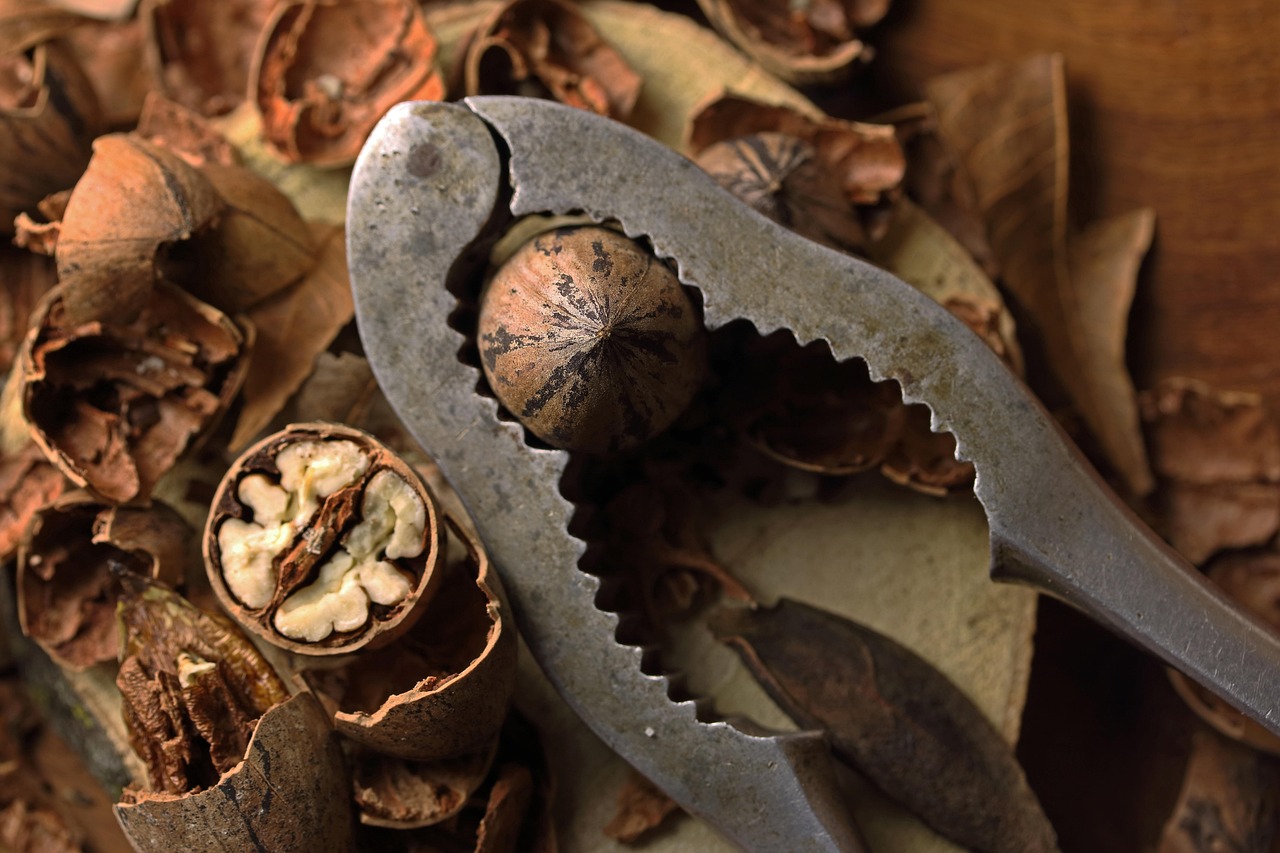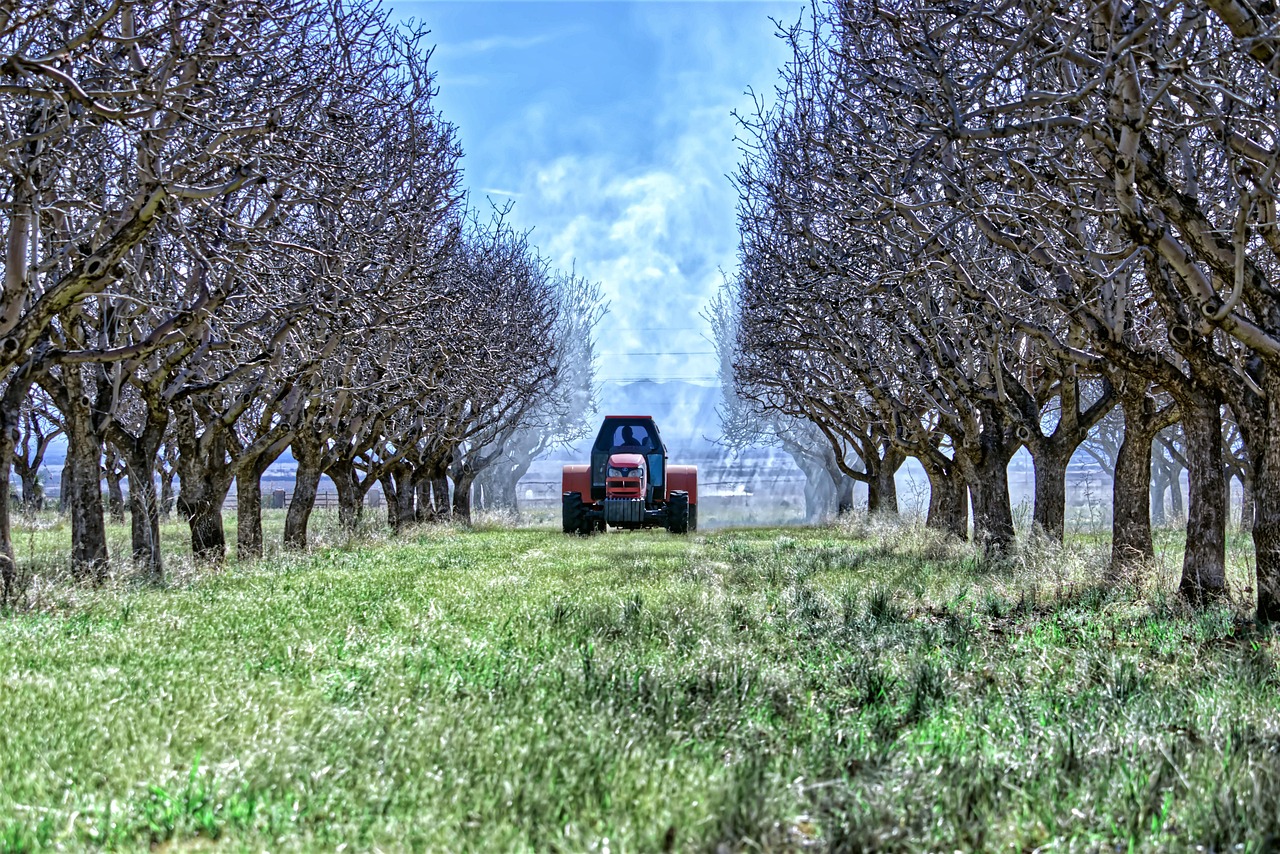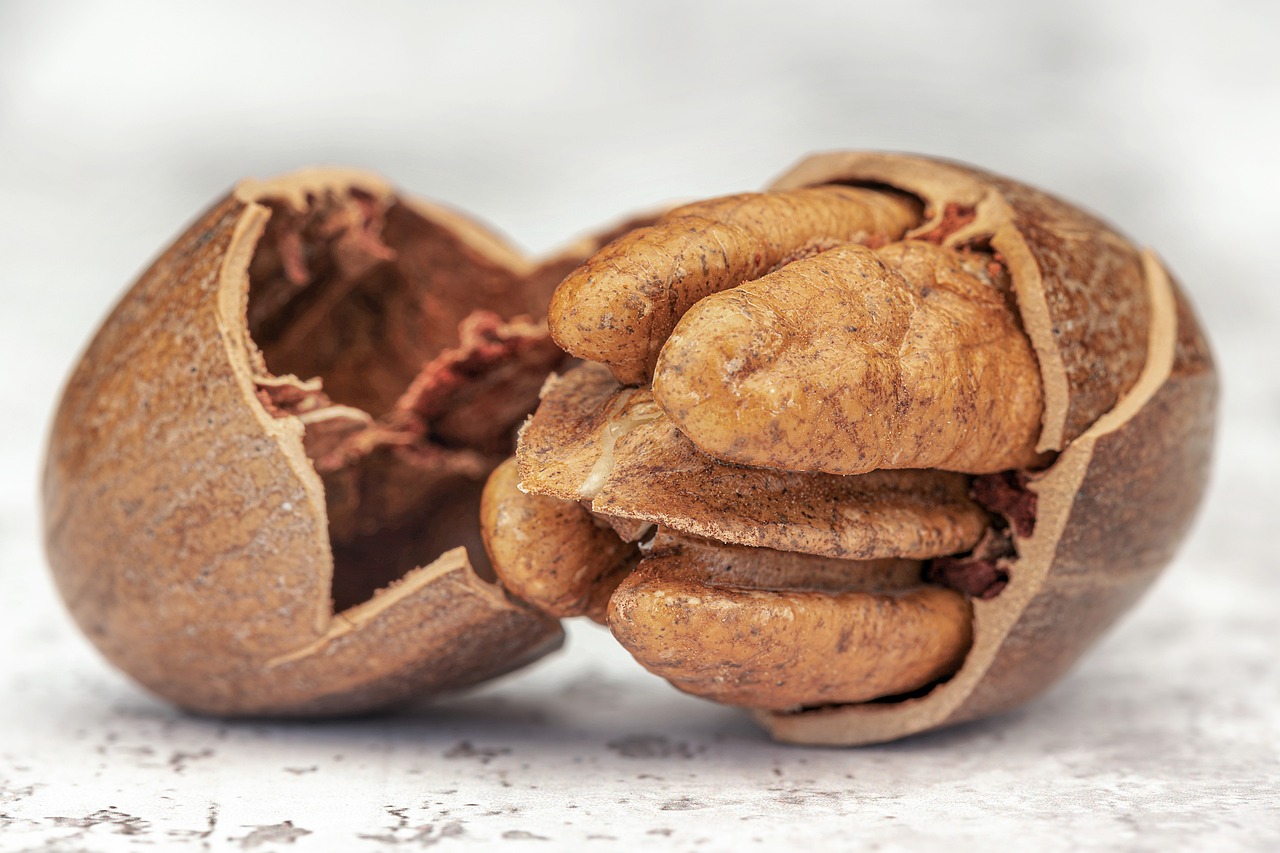The Northern Pecan tree grows at a moderate rate, typically reaching full height in about 12 to 15 years. Nut production begins in the fourth or fifth year, with peak yields occurring between 15 and 25 years of age.
Understanding Northern Pecan Trees
The Northern Pecan tree (Carya illinoinensis) is a deciduous tree native to the southern United States. It is known for its delectable nuts, which are a favorite in many culinary dishes. These trees thrive in well-drained soils and require a warm climate to flourish. Understanding their growth rate and nut production is essential for both commercial growers and home gardeners.

Northern Pecans are particularly valued for their high-quality nuts, which are rich in oil and flavor. They can be harvested for consumption raw, roasted, or used as an ingredient in various recipes. Additionally, the pecan tree provides shade and beauty to any landscape, making it a popular choice among homeowners.
Growth Rate of Northern Pecan Trees
The growth rate of Northern Pecan trees can vary based on several factors, including soil quality, climate, and care practices. Generally, these trees exhibit a moderate growth rate. Under ideal conditions, they can grow anywhere from 1 to 2 feet per year, especially during their early years.
Factors influencing growth include:

- Soil Quality: Well-drained, loamy soils are optimal for growth.
- Water Availability: Adequate watering is crucial, particularly during dry spells.
- Sunlight: Full sun exposure is necessary for healthy development.
- Fertilization: Regular fertilization can enhance growth rates.
Most Northern Pecan trees reach a height of 70 to 100 feet at maturity. The canopy can spread widely, providing ample shade. However, achieving this size takes time and patience.
Nut Production Timeline
Northern Pecan trees typically begin producing nuts around four to five years after planting. However, the quantity and quality of nuts depend on the tree’s age and health. Initial yields may be modest but tend to increase significantly as the tree matures.
The following table outlines the average timeline for nut production:

| Tree Age (Years) | Nut Production (Pounds) |
|---|---|
| 4 – 5 | 10 – 20 |
| 6 – 10 | 30 – 50 |
| 11 – 15 | 50 – 100 |
| 16 – 25 | 100 – 200 |
| 25+ | 200+ |
The peak production period generally occurs between 15 and 25 years of age. During this time, trees can yield substantial quantities of nuts each season. After reaching peak production, nut yields may stabilize or decline slightly, depending on care and environmental conditions.
Harvesting pecans requires knowledge of the right timing. Nuts are typically ready to harvest when they fall from the tree, usually in late fall. However, growers must monitor the trees closely to ensure optimal harvesting times for the best quality nuts.
In addition to age, several environmental factors can impact nut production. Weather conditions like frost and drought can affect flowering and nut set. Proper management practices can help mitigate these risks and enhance overall yields.

Northern Pecans are primarily propagated through grafting or planting seeds. Grafted trees tend to produce nuts more quickly and reliably than those grown from seed. This practice also helps maintain desirable traits in nut quality and tree vigor.
Factors Influencing Northern Pecan Tree Growth and Nut Production
Several factors significantly influence the growth and nut production of Northern Pecan trees. Understanding these variables can help growers optimize their cultivation practices and achieve better yields. The primary factors include soil conditions, climate, tree management, and pest control.
Soil Conditions
Soil health plays a crucial role in the growth of Northern Pecan trees. The ideal soil for pecans is deep, well-drained, and rich in organic matter. Here are some key aspects of soil conditions to consider:
- pH Level: The optimal soil pH for pecans ranges from 6.0 to 7.5. Regular soil testing can help maintain this balance.
- Nutrient Content: Essential nutrients such as nitrogen, phosphorus, and potassium must be present in adequate amounts. Soil amendments may be necessary based on soil tests.
- Drainage: Poorly drained soils can lead to root rot and other diseases. Ensuring good drainage is vital for healthy tree growth.
Climate Requirements
The Northern Pecan tree thrives in a warm climate. It is primarily grown in the southern United States, where temperatures are conducive to growth and nut production. Important climate factors include:
- Temperature: Pecans require a minimum temperature of 60°F for proper growth during the growing season.
- Frost Risk: Late spring frosts can damage flowers and reduce nut set. Growers should select varieties suited to their local climate.
- Rainfall: Adequate rainfall is essential during the growing season, with about 30 to 40 inches annually being ideal.
Tree Management Practices
Effective management practices can enhance the growth rate and nut production of Northern Pecan trees. These practices include:
- Irrigation: Consistent watering is essential during dry periods. Drip irrigation systems can provide efficient water management.
- Fertilization: Regular applications of balanced fertilizers can boost tree health and nut production. A soil test can guide appropriate fertilization.
- Pruning: Regular pruning helps maintain tree shape, promotes airflow, and enhances light penetration, all of which are beneficial for nut production.
Pest and Disease Management
Pests and diseases pose significant threats to the health of Northern Pecan trees. Effective management strategies are crucial for sustaining healthy growth and productive yields. Common pests include:
- Pecan Weevil: This insect damages nuts, leading to reduced yields. Monitoring traps can help in early detection.
- Pecan Nut Casebearer: This caterpillar feeds on young nuts, causing significant losses if not controlled.
- Aphids: These sap-sucking insects can weaken trees and transmit diseases. Regular inspections are necessary to manage aphid populations.
In addition to pests, several diseases can affect pecan trees, including:
- Pecan Scab: A fungal disease that causes leaf spots and can reduce nut yield significantly.
- Crown Gall: A bacterial infection that can weaken trees and lead to decline.
Implementing integrated pest management (IPM) strategies can help minimize damage from pests and diseases while promoting environmental sustainability.
Selecting the Right Variety
Selecting the right variety of Northern Pecan tree is essential for successful cultivation. Different varieties have varying growth rates, nut quality, and resistance to diseases. Some popular varieties include:
| Variety | Growth Rate | Nut Quality | Disease Resistance |
|---|---|---|---|
| Wichita | Moderate | High | Good |
| Pawnee | Fast | Excellent | Moderate |
| Moneymaker | Moderate | Good | Poor |
| Desirable | Slow | Very High | Good |
Selecting a variety suited to your local climate and soil conditions is critical for maximizing growth rates and nut production. Consulting with local agricultural extension services can provide valuable insights into the best varieties for specific regions.
The choice of rootstock is also important when grafting pecan trees, as it can influence disease resistance and adaptability to local conditions.
Environmental Considerations for Northern Pecan Trees
To ensure the successful growth and nut production of Northern Pecan trees, it is essential to consider environmental factors. These include climate conditions, water management, and local ecosystems. Each of these aspects can affect the overall health and productivity of the trees.
Climate Adaptability
Northern Pecan trees thrive in regions with a temperate climate. However, they are susceptible to extreme weather conditions. Understanding how climate affects the trees is crucial for growers. Key climate considerations include:
- Temperature Extremes: While pecan trees prefer warm temperatures, extreme cold can damage buds and reduce fruit set. Growers should select varieties that are well-suited to their specific climate zone.
- Humidity Levels: Higher humidity can promote fungal diseases, while low humidity may stress trees. Maintaining appropriate humidity levels through proper irrigation can help mitigate these risks.
- Wind Exposure: Strong winds can damage branches and lead to fruit drop. Planting trees in sheltered locations can protect them from wind damage.
Water Management
Water availability is critical for the growth of Northern Pecan trees. Proper irrigation practices help ensure that trees receive adequate moisture throughout the growing season. Consider the following:
- Irrigation Systems: Drip irrigation is often recommended for its efficiency in delivering water directly to the root zone. This method minimizes water waste and reduces disease risk.
- Soil Moisture Monitoring: Regularly checking soil moisture levels can help prevent over or under-watering. Soil moisture sensors can be beneficial for precise irrigation management.
- Rainfall Patterns: Understanding local rainfall patterns can aid in planning irrigation schedules. It’s essential to adjust watering based on seasonal changes.
Ecosystem Interactions
The surrounding ecosystem plays a vital role in the health of Northern Pecan trees. Maintaining a balanced ecosystem can enhance tree resilience and productivity. Consider these factors:
- Biodiversity: Encouraging a diverse range of plants and animals around pecan trees can attract beneficial insects that help with pest control.
- Companion Planting: Planting cover crops or companion plants can improve soil health and provide habitat for beneficial organisms.
- Pollinators: Pecan trees are wind-pollinated, but nearby flowering plants can attract pollinators, which may help improve nut set.
Nutrient Management for Optimal Growth
Nutrient management is essential for promoting healthy growth and maximizing nut production in Northern Pecan trees. A well-balanced nutrient supply supports tree vigor, enhances disease resistance, and improves nut quality.
Essential Nutrients
The primary nutrients required by Northern Pecan trees include nitrogen, phosphorus, potassium, calcium, magnesium, and trace elements such as zinc and manganese. Each nutrient serves a specific purpose:
- Nitrogen: Promotes leaf growth and overall tree health.
- Phosphorus: Supports root development and nut formation.
- Potassium: Enhances fruit quality and resistance to disease.
Fertilization Practices
Effective fertilization practices include:
- Soil Testing: Conducting soil tests regularly helps determine nutrient deficiencies and guide fertilization needs.
- Application Timing: Fertilizers are typically applied in late winter or early spring before new growth begins.
- Organic Amendments: Incorporating organic matter, such as compost or well-rotted manure, improves soil fertility and structure.
Pest Management Strategies
Pest management is crucial for maintaining healthy Northern Pecan trees. Integrated pest management (IPM) strategies can minimize pest impacts while promoting environmental health. Key strategies include:
- Monitoring: Regularly inspect trees for signs of pest activity to catch infestations early.
- Cultural Practices: Implementing practices such as crop rotation and proper sanitation can reduce pest populations.
- Pesticide Use: If needed, using targeted pesticides that are least harmful to beneficial organisms can help control pests effectively.
By understanding the environmental considerations and implementing effective nutrient management practices, growers can significantly enhance the growth rate and nut production of Northern Pecan trees. These efforts contribute to sustainable cultivation and improved yields over time.
Long-Term Care for Northern Pecan Trees
Maintaining Northern Pecan trees requires a long-term commitment to care and management. While the initial years of growth focus on establishing the tree, ongoing care is essential for sustained health and productivity. Here are several important aspects of long-term care:
Pruning and Thinning
Regular pruning and thinning of branches help maintain tree structure and promote optimal sunlight penetration. Proper pruning techniques include:
- Removing Dead or Diseased Wood: This helps prevent the spread of diseases and pests.
- Thinning Crowded Branches: Thinning allows for better air circulation and reduces competition for nutrients.
- Shaping the Tree: A well-shaped tree can enhance nut production by providing better access to sunlight.
Pruning should be done during the dormant season, typically in late winter, to minimize stress on the tree.
Irrigation Adjustments
As Northern Pecan trees mature, their water needs will change. Adjusting irrigation practices based on tree size and weather conditions is crucial. Consider the following:
- Watering Frequency: Mature trees may require less frequent watering compared to younger ones. Monitor soil moisture to determine the best schedule.
- Deep Watering: Encourage deep root growth by applying water slowly and thoroughly to reach deeper soil layers.
- Seasonal Adjustments: During dry spells or droughts, increase irrigation to ensure trees receive adequate moisture.
Fertilization Over Time
The nutritional needs of Northern Pecan trees evolve as they mature. Regular soil testing should guide adjustments in fertilization practices. Long-term strategies include:
- Adjusting Nutrient Ratios: As trees grow, their nutrient requirements may change. A balanced fertilizer that meets these needs is essential.
- Organic Amendments: Adding organic matter over time can improve soil health and provide a slow-release source of nutrients.
- Timing of Applications: Continue to apply fertilizers at the right time to maximize uptake during critical growth stages.
Avoiding Common Pitfalls
While Northern Pecan trees are resilient, they can face various challenges. Being aware of common pitfalls can help growers take proactive measures to avoid them. Key pitfalls include:
- Pest Infestations: Regular monitoring can help prevent severe infestations that could threaten tree health.
- Water Stress: Both overwatering and underwatering can harm trees. Finding a balance is crucial for optimal growth.
- Nutrient Imbalances: Not addressing nutrient deficiencies can lead to poor growth and reduced nut production. Regular soil tests are essential.
- Neglecting Pruning: Failing to prune can lead to overcrowding and increased risk of disease.
Final Thoughts
Northern Pecan trees are an excellent addition to any landscape, providing beauty and delicious nuts for many years. Understanding their growth rate and factors influencing nut production is key for successful cultivation. By implementing effective management practices, including proper irrigation, nutrient management, pest control, and pruning, growers can optimize tree health and productivity.
As trees mature, regular care becomes increasingly important. A long-term commitment to monitoring environmental conditions, adjusting care strategies, and understanding the specific needs of the selected pecan variety can lead to fruitful harvests for decades.
In conclusion, with proper attention and care, Northern Pecan trees can thrive, offering abundant nut production while enhancing the aesthetic appeal of your property. These magnificent trees serve not only as a source of food but also as a testament to sustainable agricultural practices that benefit both the grower and the environment.
